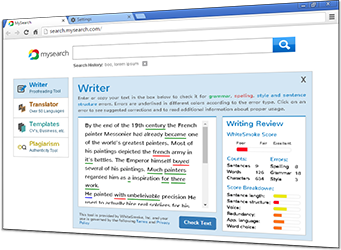Adverbs
Adverbs serve to modify or give more information about a verb, an adjective or another adverb. They give information on how an action (verb) is being done. Adverbs often end in ‘ly’.
Examples
- Beautiful becomes beautifully
- Careful would become carefully
Take care - there are some words that end with “ly” that are not adverbs. Examples would be ‘friendly’ or ‘lovely’. These are actually adjectives.
Examples of use of adverbs to describe a verb
- John finishes his work quickly and well.
- My parents will visit tomorrow.
- Let’s go home.
- The child was very unhappy.
The adverbs used here answer questions like: How does John finish? “quickly and well.” When will my parents visit? “tomorrow.” Where will we go? “home.” To what extent was the child unhappy? “very”
Interrogative Adverbs
These adverbs ask a question. Interrogative adverbs are ‘how’, ‘when’, ‘where’ and ‘why’.
Examples
- How did Susan get here?
- Why did you break the piggy bank?
You know Susan got here. What the adverb here does is let you ask how she got here. You know the piggy bank was broken because you can see the pieces. You want to know why it was broken.
Conjunctive Adverbs
Conjunctive adverbs join two ideas together. Conjunctive adverbs can also help you transition by the way they link the two ideas. They can give emphasis to one of the ideas. They can also answer how the two ideas are related. Though they are often mislabelled conjunctive adverbs are very useful when you need to link ideas and paragraphs. Some of the more common conjunctive adverbs include ‘besides’, ‘however’, ‘indeed’, ‘moreover’, ‘nevertheless’, ‘otherwise’ and ‘therefore’.
Examples
- The weatherman said it would rain; however, we forgot to bring our rain gear.
- Some children do not like to read; nevertheless, they should learn how.
For proper punctuation you should use a semicolon before the conjunctive adverb and a comma should be used after it. For more information on punctuation look for an online punctuation checker or English proofreading and editing software. Either should help you to better understand punctuation.
Comparative adverbs
These adverbs offer a comparison to one or more other things. In the English language the comparative or superlative forms of adverbs aren't usually formed by adding “ly”. Since they are comparative they are most often formed by adding “er” or “est” to the end of the base word. Other common comparative adverbs include ‘more’, ‘most’, ‘least’ and ‘less’.
Examples
- Bob is the fastest runner in his class.
- The blue dress is prettier than the pink one.
In these sentences there are comparisons made. In the first, Bob is compared to his class. In the second one the blue dress is compared to the pink one.



